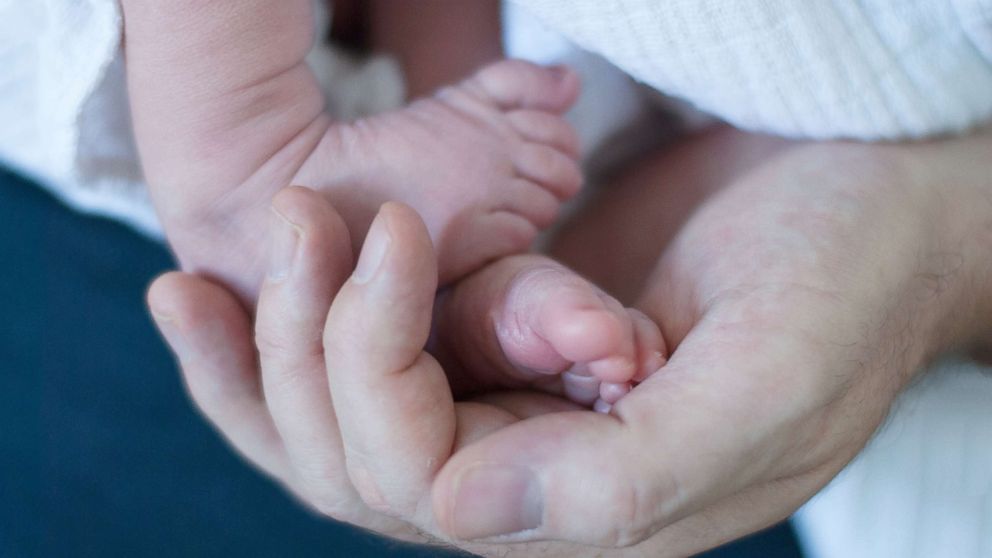…的数目出生根据一份新的联邦报告,这是美国七年来首次出现增长。
临时数据美国疾病控制和预防中心(Centers for Disease Control and Prevention)的国家健康统计中心(National Center for Health Statistics)周二发布的数据显示,2021年有3,659,289名婴儿出生,比2020年增加了1%。
这也标志着自2014年以来出生率的首次上升。在本报告之前,出生人数平均每年下降2%。
报告没有解释出生人数增加的原因,但是皮尤研究中心的民意调查显示由于公共健康和经济的不确定性,美国人在疫情的第一年推迟了生育,所以数量的上升可能是反弹的结果。
“当谈到生育行为的变化时,我们是有限的,”来自NCHS生命统计部门的Brady Hamilton博士,该报告的主要作者,告诉ABC新闻。“这就是你需要调查决策过程背后的原因的地方。”
该报告还显示,生育率(每1000名15至44岁女性中活产婴儿的数量)为56.6。根据疾病预防控制中心的数据,这高于2020年的56例,也是自2014年以来的首次增长。
然而,总生育率----假设1 000人一生中的生育数量----为每1 000名妇女1 663.5次生育。
这仍然低于专家所说的更替水平,即人口自我更替所需的水平,即每1000名妇女生育2100名婴儿。
该小组观察了25岁及以上女性的出生率上升,而24岁及以下女性的出生率下降。
“这在某种程度上表明,当我们看到2019年至2020年的出生人数下降时,可能有很多出生被推迟了,”汉密尔顿说。“人们在等着看(疫情)会发生什么,老年妇女的发病率上升,因为她们可能已经有了孩子。”
在15至19岁的青少年中,出生率下降了6%,从15.4‰下降到14.4‰,创下该年龄组的历史新低。
自2007年至去年,青少年出生率持续下降,平均降幅约为7%。
“从时间上看,自1991年以来下降了77%,自2017年以来下降了65%。这太令人吃惊了,”汉密尔顿说。“那当然是好消息。如果这种情况持续下去,那么看看我们明年的表现会很有趣。”
与此同时,报告发现,10至14岁的青少年的出生率为0.2‰,自2015年以来没有变化。
此外,研究人员还研究了不同种族的生育情况,发现从2020年到2021年,白人和西班牙裔女性的生育数量都增加了约2%。
与此同时,同期黑人和亚裔女性的生育数量分别下降了2.4%和2.5%,而美洲印第安人/阿拉斯加土著女性的生育数量下降了3.2%。
该报告还调查了分娩的类型和婴儿出生的时间。
数据显示,2021年,32.1%的婴儿通过剖宫产出生,高于2020年的31.8%,这是自2009年至2019年该比例下降后连续第二次上升。
在所有种族和民族群体中,剖腹产的比例都有所增加,其中黑人妇女的比例最高,从36.3%增加到36.8%。
虽然剖腹产可以降低高危妊娠妇女的死亡风险,但它们也与感染或血凝块等并发症有关克利夫兰诊所。
2021年,早产率也上升了4%,从10.09%升至10.48%,这是自2007年以来报道的最高比率。早期早产(孕34周之前)和晚期早产(孕34至37周)的婴儿死亡率增加。
早产儿有更大的风险出现喂养、呼吸、视力和听力问题,以及行为问题。
“每当你看到早产的增加,就要担心了,”来自生命统计部门的乔伊斯·马丁,该报告的合著者,告诉美国广播公司新闻。“我们看到早期婴儿数量增加,与晚期婴儿相比,他们活不过第一年的风险更大。”

股票照片/盖蒂图片
在这张未标明日期的照片中,一个成年人抱着一个新生儿的脚。
马丁说,还不清楚早产率上升的原因,但他说,小于18岁和大于35岁的母亲更有可能生下早产儿。
“我们确实看到大龄母亲的出生率有所上升。尚不清楚它是否会影响这种变化,”她说。
1st increase in births reported in 7 years, CDC finds
The number ofbirthsincreased in the United States for the first time in seven years, according to a new federal report.
Provisional datapublished Tuesday from the Centers for Disease Control and Prevention's National Center for Health Statistics found there were 3,659,289 babies born in 2021, a 1% increase from 2020.
It also marks the first rise in births since 2014. Prior to this report, the number of births had been decreasing by an average of 2% per year.
The report did not explain why the number of births increased, butPew Research Center polls have suggestedAmericans delayed having babies during the first year of the pandemic due to public health and economic uncertainty, so the rising number could be the result of a rebound.
"When it comes to changes in fertility behavior, we're limited," Dr. Brady Hamilton, from the NCHS Division of Vital Statistics and lead author of the report, told ABC News. "That's where you need a survey about what's behind the decision-making process."
The report also showed the fertility rate -- the number of live births per 1,000 women between the ages 15 and 44 -- was 56.6. This is up from 56 in 2020 and the first increase since 2014, according to the CDC.
However, the total fertility rate -- the number of births a hypothetical group of 1,000 people would have over their lifetimes -- was 1,663.5 births per 1,000 women.
This is still below what experts refer to as replacement level, the level a population needs to replace itself, which is 2,100 births per 1,000 women.
The team looked at birth rates among women aged 25 and older increased while decreasing for those aged 24 and younger.
"That sort of suggests [that] when we saw the decline in births from 2019 to 2020, probably a lot of births were postponed," Hamilton said. "People were waiting to see what happened [with the pandemic] and rates rose in older women as they may have proceeded to have that child."
Among teenagers aged 15 to 19, the rate of birth declined 6% from 15.4 per 1,000 to 14.4 per 1,000 -- a record low for this age group.
Teenage births have been continuously falling since 2007 by an average of about 7% through last year.
"When you look at it across time, that's a 77% decline since 1991 and 65% decline since 2017. That's astonishing," Hamilton said. "That's certainly good news. And it will be interesting to see when we go into next year if it continues on."
Meanwhile, for tweens and teens aged 10 to 14, the rate of birth was 0.2 per 1,000, which is unchanged since 2015, the report found.
Additionally, researchers also looked at births by race and found that white and Hispanic women each saw the number of births increase by about 2% from 2020 to 2021.
Meanwhile, Black and Asian women saw the number of births decline by 2.4% and 2.5%, respectively, over the same period, while American Indian/Alaskan Native women saw their numbers fall by 3.2%.
The report also examined the type of delivery and how early the babies were born.
Data showed that 32.1% of babies were born via cesarean delivery in 2021, up from 31.8% in 2020 and the second increase in a row after the rates had declined from 2009 to 2019.
The percentage of C-sections increased among all racial and ethnic groups, with the highest seen among Black women, from 36.3% to 36.8%.
While C-sections can lower the risk of death in women with high-risk pregnancies, they are associated with complications such as infection or blood clots, according to theCleveland Clinic.
The preterm birth rate also rose by 4% in 2021 from 10.09% to 10.48%, which is the highest reported rate since 2007. Increases were seen in babies born early preterm, which is before 34 weeks gestation, and later preterm, which is 34 to 37 weeks gestation.
Premature babies are at a greater risk for problems with feeding, breathing, vision and hearing, as well as behavioral issues.
"Whenever you see an increase in preterm births, that's concerning," Joyce Martin, from the Division of Vital Statistics and co-author of the report, told ABC News. "And we saw an increase in early-term babies, and they're at greater risk than later-term babies of not surviving the first year of life."
Martin said it's not clear what's behind the rise in preterm birth rates but said mothers younger than 18 and older than 35 are more likely to have premature babies.
"And we did see an increase in older moms' birth rates. It's not clear if it influences this change yet," she said.





